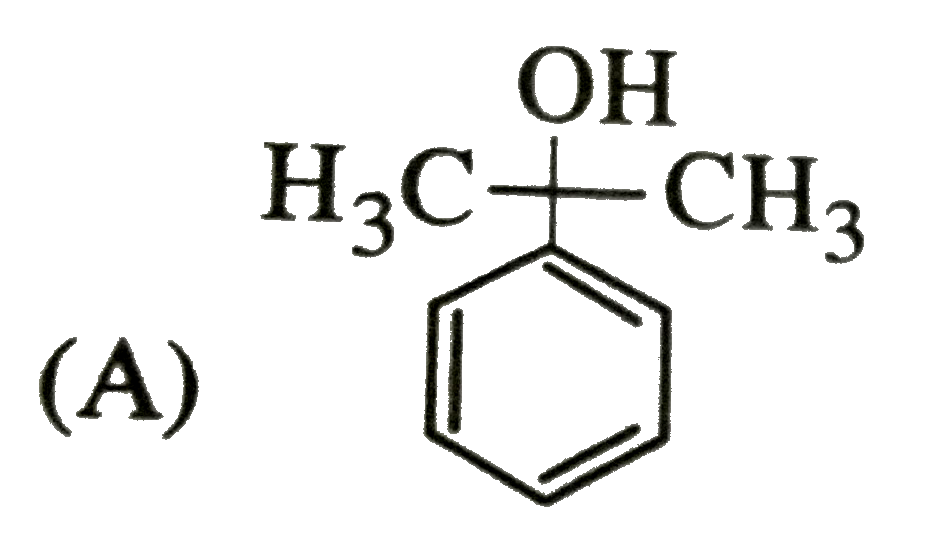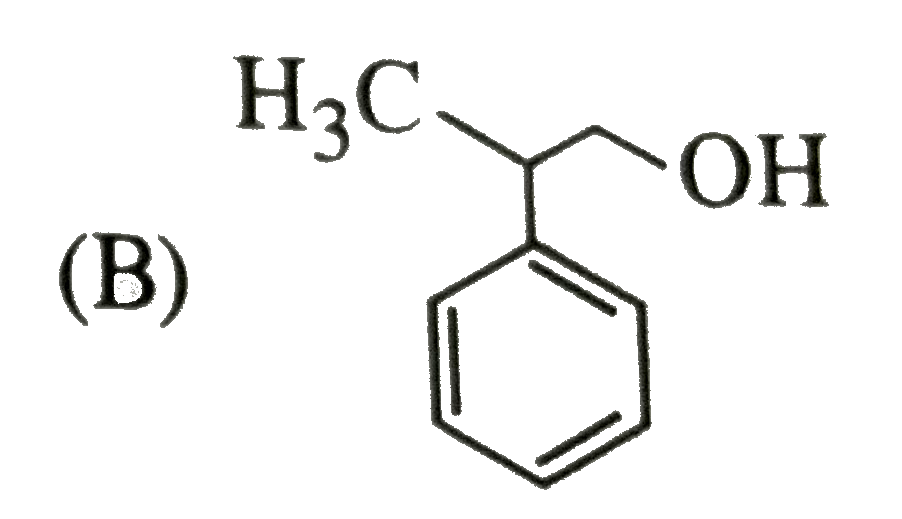What product would you get from acid catalysed hydration of 1-methylcyclohexene? Explain.
To determine the product of the acid-catalyzed hydration of 1-methylcyclohexene, we can follow these steps:
1. Identify the Structure of 1-Methylcyclohexene:
- The structure of 1-methylcyclohexene consists of a cyclohexene ring with a methyl group (−CH3) attached to the first carbon. The double bond is between carbon 1 and carbon 2 of the cyclohexene.
2. Acid-Catalyzed Hydration Reaction:
- In an acid-catalyzed hydration reaction, the double bond of the alkene reacts with a proton (H⁺) from the acid. This leads to the formation of a carbocation.
3. Formation of Carbocation:
- The double bond will attack the proton (H⁺), resulting in the formation of a carbocation. The most stable carbocation will be formed, which is typically the more substituted one.
- For 1-methylcyclohexene, the possible carbocations are:
- A secondary carbocation at carbon 2 (with the methyl group at carbon 1).
- A tertiary carbocation at carbon 1 (if the double bond shifts).
4. Stability of Carbocations:
- The tertiary carbocation (more substituted) is more stable than the secondary carbocation. Therefore, the reaction will favor the formation of the tertiary carbocation.
5. Nucleophilic Attack by Water:
- Water (H₂O) acts as a nucleophile and attacks the carbocation. This results in the formation of an oxonium ion (where the oxygen has a positive charge).
6. Deprotonation:
- Another water molecule can then deprotonate the oxonium ion, leading to the formation of the final product.
7. Final Product:
- The final product of this reaction is 1-methylcyclohexanol. The hydroxyl group (−OH) replaces the double bond, and the structure is that of a six-membered ring with a methyl group and an alcohol functional group.
Conclusion:
The product obtained from the acid-catalyzed hydration of 1-methylcyclohexene is 1-methylcyclohexanol.
---
- The structure of 1-methylcyclohexene consists of a cyclohexene ring with a methyl group (−CH3) attached to the first carbon. The double bond is between carbon 1 and carbon 2 of the cyclohexene.
- In an acid-catalyzed hydration reaction, the double bond of the alkene reacts with a proton (H⁺) from the acid. This leads to the formation of a carbocation.
- The double bond will attack the proton (H⁺), resulting in the formation of a carbocation. The most stable carbocation will be formed, which is typically the more substituted one.
- For 1-methylcyclohexene, the possible carbocations are:
- A secondary carbocation at carbon 2 (with the methyl group at carbon 1).
- A tertiary carbocation at carbon 1 (if the double bond shifts).
- The tertiary carbocation (more substituted) is more stable than the secondary carbocation. Therefore, the reaction will favor the formation of the tertiary carbocation.
- Water (H₂O) acts as a nucleophile and attacks the carbocation. This results in the formation of an oxonium ion (where the oxygen has a positive charge).
- Another water molecule can then deprotonate the oxonium ion, leading to the formation of the final product.
- The final product of this reaction is 1-methylcyclohexanol. The hydroxyl group (−OH) replaces the double bond, and the structure is that of a six-membered ring with a methyl group and an alcohol functional group.
The product obtained from the acid-catalyzed hydration of 1-methylcyclohexene is 1-methylcyclohexanol.
Topper's Solved these Questions
- HYDROCARBONSBOOK - MODERN PUBLICATIONCHAPTER - HYDROCARBONSEXERCISE - COMPETITION FILE (OBJECTIVE TYPE QUESTIONS) (MULTIPLE CHOICE QUESTIONS WITH ONLY ONE CORRECT ANSWER)
45 Videos
- HYDROCARBONSBOOK - MODERN PUBLICATIONCHAPTER - HYDROCARBONSEXERCISE - COMPETITION FILE (OBJECTIVE TYPE QUESTIONS) (MULTIPLE CHOICE QUESTIONS from competitive examinations (AIPMT, NEET & Other State Boards Medical Entrance))
50 Videos
- HYDROCARBONSBOOK - MODERN PUBLICATIONCHAPTER - HYDROCARBONSEXERCISE - Revision Exercises (Long Answer Questions (Carrying 5 marks))
4 Videos
- HALOALKANES AND HALOARENESBOOK - MODERN PUBLICATIONCHAPTER - HALOALKANES AND HALOARENESEXERCISE - UNIT PRACTICE TEST
12 Videos
- HYDROGENBOOK - MODERN PUBLICATIONCHAPTER - HYDROGENEXERCISE - UNIT PRACTICE TEST (for Board Examination)
9 Videos
Similar Questions
Knowledge Check
 on acid catalysed hydration givesA
on acid catalysed hydration givesA B
B C
C DNone of these
DNone of theseThe product of acid catalysed hydration of 2-phenylpropene is
A3-phenyl-2-propanolB1-phenyl-2-propanolC2-phenyl-2-propanolD2-phenyl-1-propanolThe product of acid catalyzed hydration of 2−pheny1propene is
A3-phenyl-2-propanolB1-phenyl-2-propanolC2-phenyl-2-propanolD2-phenyl-1-propanol
(a) What is meant by Hydroboration-oxidation reaction ? Illustrate it with an example.
(b) Predict the major product of acid catalysed dehydration of 1-methylcyclohexanol.
View SolutionPredict the major product of acid catalysed dehydration of
(i) 1 - methylcyclohexanol and (ii) Butan-1-ol
View SolutionPredict the major product of acid catalysed dehydration of
(i) 1-methylcyclohexanol and (ii) butan-1-ol
View SolutionPredict the major product of acid catalysed dehydration of
(i) 1-methylcyclohexanol and (ii) butan-1-ol
View SolutionPredict the major product of acid catalysed dehydration of :
(i) 1-Methylcyclohexanol (ii) Butan -1-ol
View Solution

